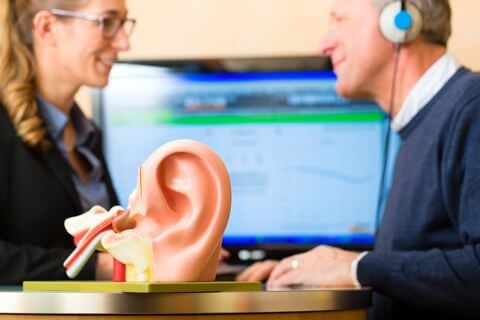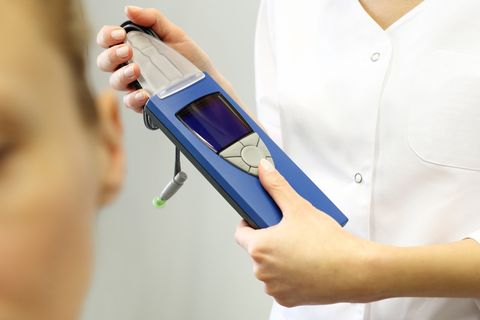Tinnitus
Tinnitus Basics
Tinnitus (literally “ringing” in Latin) is characterised by ringing, buzzing or roaring noises that originate in the ear or the head. Some people have tinnitus, but it does not bother them, while others can become very upset by its presence. They need strategies and treatments to manage it.
Though this condition is usually not dangerous, it can be a symptom of another health problem. Tinnitus has been known to cause stressful side effects including fatigue, sleep problems, difficulty concentrating, memory problems, depression, anxiety and irritability. It requires an evaluation and a treatment plan.

What happens during an assessment appointment?
At your Initial Assessment, the Audiologist will review your relevant medical history and perform a range of diagnostic tests to assess your tinnitus and audiological profile. These tests are designed to diagnose your tinnitus type, pinpoint your tinnitus tone and identify any associated hearing loss that may be exacerbating the impact of your condition.
Your audiologist will discuss the treatment options available to you and the likely prognosis following treatment. There will also be plenty of time for you to ask questions and explore self-help techniques.
Whether you’ve recently developed tinnitus, or have a longstanding diagnosis, our audiologist will be able to provide you with treatment options and provide you with expert advice based on the latest developments in tinnitus and neuroscientific research.
What Treatments Are Available?
Depending on the cause of your tinnitus and other factors, several treatments are available, including medical options and audiological options. Counselling the patient about the mechanism of tinnitus and the strategies to manage it are as important as any treatment alone.
If a hearing loss is present and no other underlying conditions exist as determined by your medical examination, hearing devices often bring great relief to tinnitus suffers. It is well known that by improving the person’s ability to hear the missing sounds, we give the brain something else to listen to. Instead of the brain sending signals down to the ear to detect sound and causing noise, it can relax and use the sound it is getting through the hearing devices. In addition to letting the brain stop searching for a sound, with hearing devices, we hear speech and environmental sounds and get another place to focus our attention.

If improving the tinnitus with hearing devices does not provide enough relief, a common treatment is acoustic therapy or sound therapy. Sound therapy makes use of sounds to help the brain re-focus and diminish the emotional impact of the tinnitus. Many hearing devices have a sound therapy program built in that may be turned on for additional tinnitus management.
If there is no hearing loss, and medical issues have been ruled out by a physician, a sound therapy device may be fit on the person with tinnitus. This device keeps a low-level signal playing in the ears, and over time, it can cause the brain to ignore the tinnitus and relax the wearer. Again, counselling about the tinnitus and treatment options are extremely valuable in tinnitus management.
In our clinic, we will provide these tinnitus management devices for people with hearing loss and those without hearing loss.

Pure Tone Audiometry
Pure tone testing takes place in our sound-treated booth. The goal of this test is to determine the softest sounds that you can hear at different pitches or pure tones. Air conduction testing is done via regular earphones or with small foam inserts. Bone conduction testing is done with a particular headphone placed behind the ear. The graph of these test results constitutes an audiogram. The results help the audiologist determine if the hearing loss originates from the outer, middle ear or the inner ear. The audiogram helps us see which pitches are not audible, and it forms the basis of our explanation of how you hear in the real world.

Tympanometry (Immittance) And Acoustic Reflexes
Tympanometry is completed to assess the function of the middle ear. We measure how well the eardrum vibrates by creating variations of air pressure in the ear canal. A series of moderately loud tones are then presented to check muscle reflexes in each ear. This gives us information about the mechanical functions of the ear. A referral to a physician may be made if these tests are outside of the normal range.
